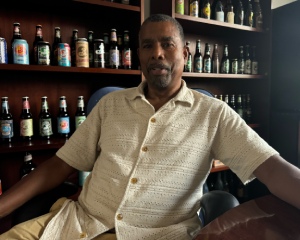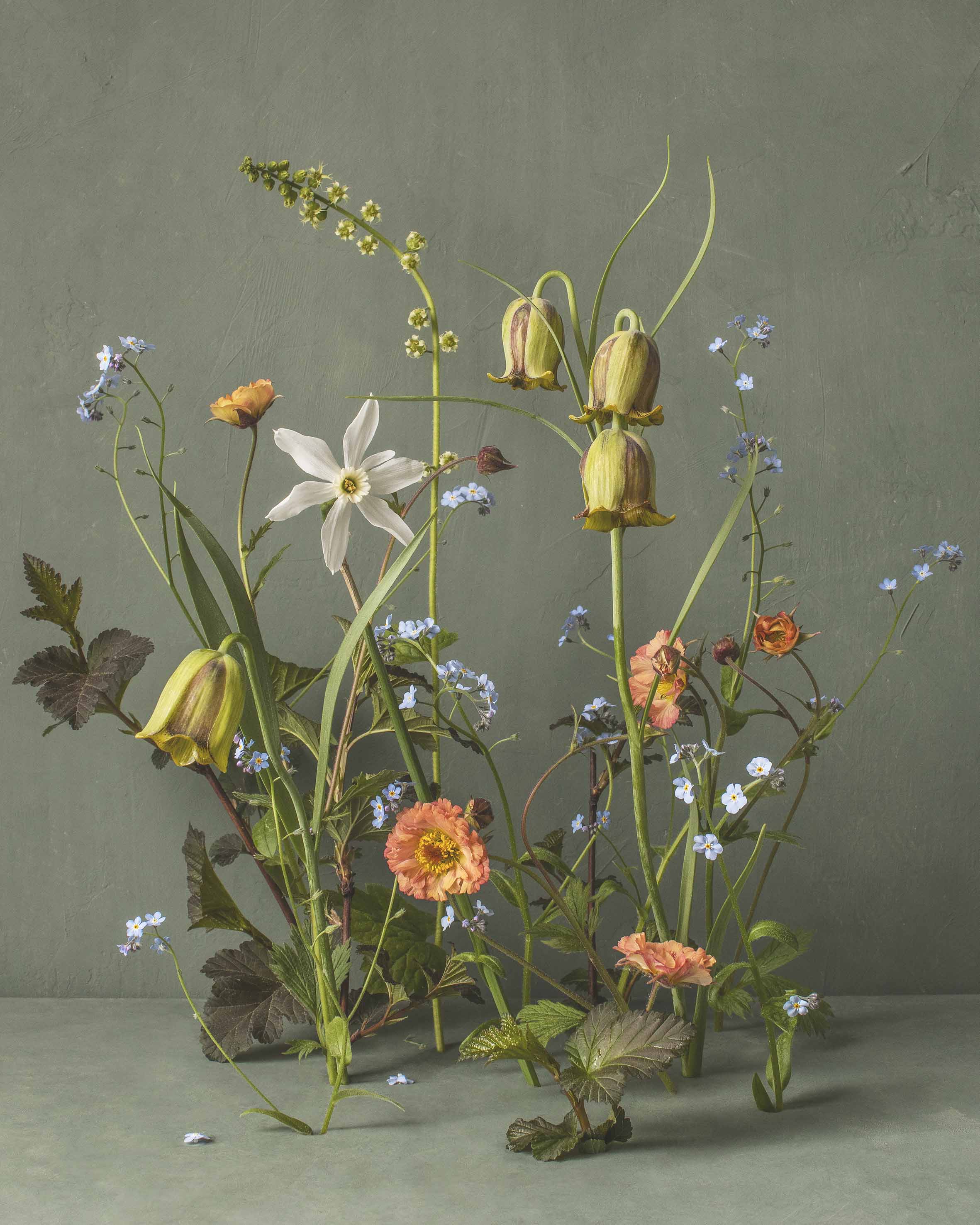
“Inside the Floral Mind:
A Conversation with Kreetta Järvenpää”
Floral Artist and Photographer
By Gayil Nalls
Sign up for our monthly newsletter!
Y ou might not expect it, but Finnish floral artist Kreetta Järvenpää has a unique relationship with dead plants. She preserves most of the flowers she uses in her sculptural botanical arrangements, photographing them with a deep appreciation for each bloom’s ephemeral beauty. Captivated by flowers at every stage of their existence, Kreetta creates stunning color palettes that reflect the transient nature of life. It’s rare for a flower under her care to end up in the compost; instead, they remain in her studio, where she thoughtfully considers each bloom as she arranges it.
Kreetta finds profound inspiration in the wilting of flowers. As they fade, their colors soften, their forms become more intricate, and they reveal a subtle, soulful charm that might have been overlooked during their prime. For her, this stage of a flower’s life symbolizes the passage of time, the beauty of impermanence, and the grace found in fading moments. Her work invites contemplation on themes such as mortality, the fleeting nature of beauty, and the quiet, understated allure that comes with life’s cycles.
Kreetta’s name resonates internationally within the realms of floral design, photography, and botanical art. Her work seamlessly blends the delicate art of flower arrangement with the evocative power of visual storytelling. Through her captivating photographs, Kreetta demonstrates a profound understanding of aesthetics and a deep appreciation for the ephemeral beauty of nature. She encourages us to reconsider our relationship with nature, fostering a mindful appreciation of its transient beauty.
One of Kreetta’s photographs, Ficaria, graces the cover of the 2024 Plantings print annual, stirring emotions with its aesthetic pleasure and memorable imagery, creating a connection between viewers and the environment.
Plantings recently spoke to Kreetta about her work.
Gayil Nalls: You immortalize the fleeting beauty of flowers, allowing them to be appreciated long after they have withered. Why?
Kreetta Järvenpää: There are many reasons, from the pleasure of creating naturally ephemeral things to capturing transience and conveying the emotions surrounding the fragility of nature. Life and art are interconnected.
You incorporate drying flowers or flowers in various stages of decay into your designs and photography. What message are you conveying through this approach?
When I first started working with flowers, I used the leftovers from the workshops I organized at my studio. These flowers were often not in perfect condition, yet I was drawn to using wilted or decaying flowers alongside fresh ones. This mix adds a certain edge and character that fresh flowers alone don’t provide.
Your work has evolved to carry an ecological and sustainable message. How has this aspect developed in your practice?
Initially, my interest was purely aesthetic—I was captivated by the shapes and appearances of the flowers. But as I delved deeper into floristry, I began to question where these flowers were coming from. I learned about the pesticides used on wholesale flowers and the unsustainable practices associated with them. This was a wake-up call for me. I realized that I could no longer support these practices and committed to using only European-grown flowers, eventually exploring ways to grow flowers myself.
I found inspiration from resources like Floret Farm in the U.S., which teaches how to grow cut flowers without pesticides, and the Slow Flower Movement. In Finland, I connected with others interested in slow flowers and began purchasing locally grown, pesticide-free flowers. My goal is to highlight the beauty in every stage of a flower’s life, from blooming to wilting and drying, and to demonstrate the ecological value of these stages.
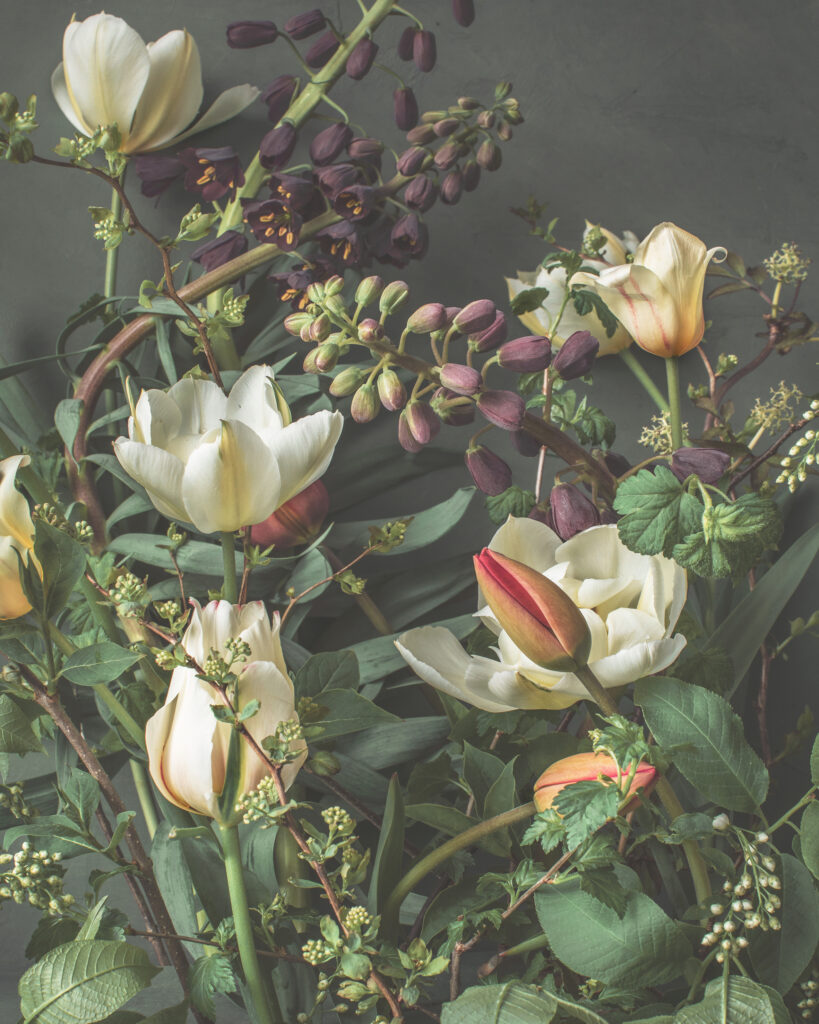
“Hey Darling” is one of the first pieces I created using the Slow Flowers concept, marking my transition to colored backgrounds. Inspired by a Nordic-themed exhibition, I chose a grayish green, a color that adds a soft, poetic feel. The title introduces a playful element, inviting viewers to interpret the artwork in their own way, much like the arrival of spring.

“Hey Darling” is one of the first pieces I created using the Slow Flowers concept, marking my transition to colored backgrounds. Inspired by a Nordic-themed exhibition, I chose a grayish green, a color that adds a soft, poetic feel. The title introduces a playful element, inviting viewers to interpret the artwork in their own way, much like the arrival of spring.
Tell us about the Ficaria image, the 2024 cover of Plantings.
I love combining apricot, reddish-yellow colors with blue backgrounds because they pop beautifully. The flowers in Ficaria also carry a powerful ecological and sustainable message. I grew all the flowers myself in my garden, using sustainable, earth-friendly methods. They were not shipped from distant locations, so they have a greatly reduced carbon footprint. (Top Image).
What is it like being a photographer and artist in Helsinki?
Living in northern Finland, we experience unique light conditions and dramatic variations throughout the year. During the summer, especially in June, we enjoy abundant daylight, which provides ample opportunities to photograph my floral arrangements. However, in the winter months, particularly November, December, and January, natural light is scarce, and it can be challenging. I often think I’m living in the wrong country for a flower photographer, but despite the stress, I cherish the beauty of our short summer floral season.
Where do you find inspiration during the low-light months?
Inspiration can come from simple things—a good morning coffee, music, or conversations with other artists. It’s about gathering small pieces from various sources and then letting your creative engine start. The interaction between you and the natural world is what matters most.
You have a keen eye for detail and harmony. How do you approach your floral design and photography to evoke emotions and capture moments in time?
My approach is characterized by a naturalistic style, often incorporating wildflowers and foraged elements to highlight the raw beauty of the natural world. I focus on sustainability, using locally sourced, seasonal flowers, and aligning my practice with eco-friendly principles. This not only enhances the authenticity of my creations but also fosters a connection between the viewer and the environment.
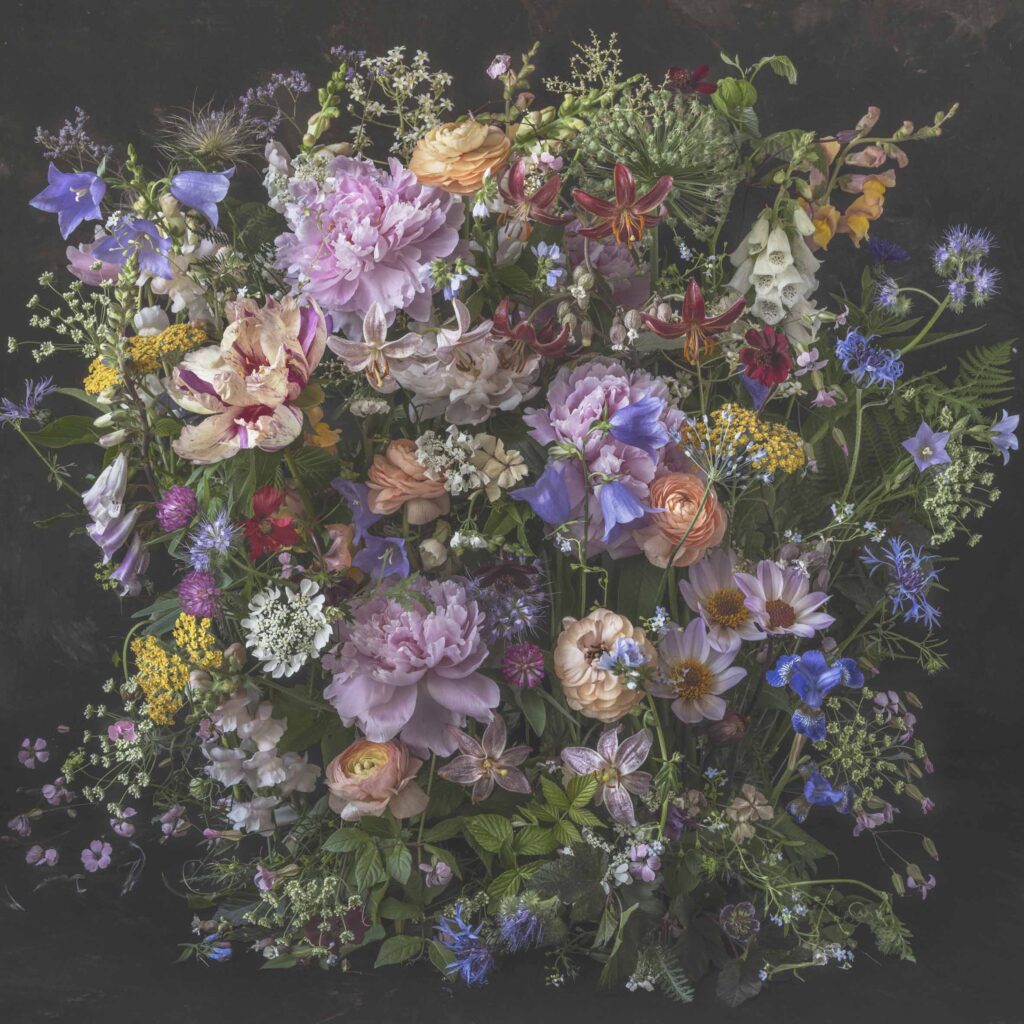
“Bells and Fairies” was created for the Flora Favola exhibition, capturing the vibrant essence of flowers from early spring to late autumn in a single, surreal composition. Featuring Finnish-grown ranunculus, peonies, and dahlias—flowers that normally bloom at different times—this piece harmonizes the impossible, showcasing the enchanting diversity of Finnish flora.

“Bells and Fairies” was created for the Flora Favola exhibition, capturing the vibrant essence of flowers from early spring to late autumn in a single, surreal composition. Featuring Finnish-grown ranunculus, peonies, and dahlias—flowers that normally bloom at different times—this piece harmonizes the impossible, showcasing the enchanting diversity of Finnish flora.
You’ve mentioned that your environmental concerns influence almost every decision you make when creating photographs. Can you give examples?
My path has become narrower as I make ecological choices. I don’t use floral foam due to the microplastics, opting for chicken wire and flower frogs instead. I don’t use chemicals and change the water frequently. To extend the life of the flowers, I keep them in a cool, dark place. Transparency is important to me, so I share how I reuse flowers in multiple arrangements without any chemicals or plastics. The most important thing is that I’m committed to using seasonal flowers.
Tell us about your cameras. What’s your favorite camera to photograph with?
The camera transforms temporary installations into lasting visual experiences. My favorite camera was a Canon 5D Mark IV, but I’m currently working with a Fuji middle-format camera. I would love to have a Hasselblad and am trying to find a way to switch to one. My favorite lens is 50 millimeters.
Your photographs are characterized by their ethereal quality, often featuring soft lighting and a muted color palette. What is behind these shots?
My photography isn’t limited to floral creations; it also encompasses still lifes and portraits. Regardless of the subject, my images convey a sense of tranquility and introspection. I tell stories through light, shadow, color, and composition, creating an atmosphere that draws the viewer into a world where time seems to stand still. My floral photographs speak to the cycles of life and the beauty of impermanence.
Do you compost the flowers in the end?
Yes, I do, but most don’t make it to the compost bin. My workspace is filled with dried and wilting flowers that I keep. It’s like a museum of flowers, and I enjoy seeing how they change over time.
What direction is your work moving in now?
I enjoy experimenting with colors, shapes, textures, and movement. I’ve taken a couple of ikebana lessons, which taught me about the importance of movement and fresh flowers. While it differs from my usual style, I see many parallels between my work and ikebana.
What is your favorite floral scent?
Lilacs.
Kreetta Järvenpää is more than just a floral designer and photographer; she is a visionary artist who captures the fleeting essence of nature and transforms it into timeless art. See more of her work at: www.kreettajarvenpaa.com
Gayil Nalls, Ph.D., is the creator of World Sensorium and founder of the World Sensorium/Conservancy.

As Ireland transitions from the rich, smoky scent of peat-burning to a more sustainable future, its olfactory heritage is evolving. What will become the next iconic aromatic symbol of Ireland?
Click to watch the documentary trailer.
Plantings
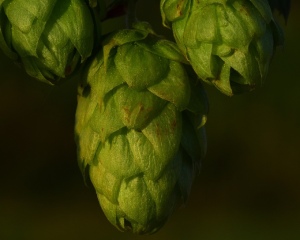
Beyond the Brew: The Medicinal Power of Hops
By Ian Sleat
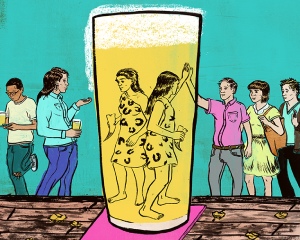
Beer Domesticated Man
By Gloria Dawson
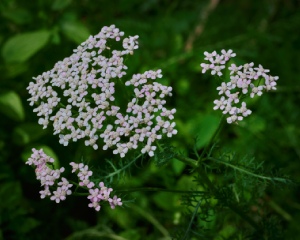
Viriditas: Musings on Magical Plants
By Margaux Crump
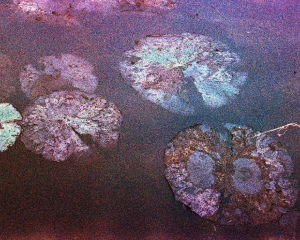
Plants, Psychodiversity, and the Paranormal
By Jake Eshelman
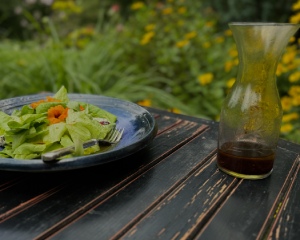
Eat More Plants Recipes:
Raspberry Balsamic Dressing
By Diane Reiss


